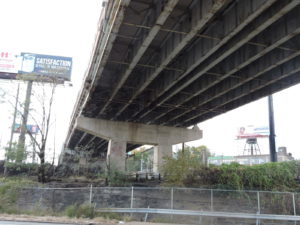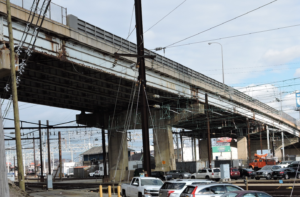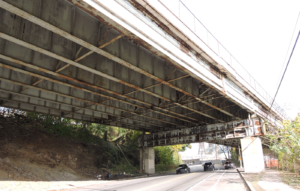Project Overview
Project Summary: Rehabilitation of the U.S.1/Roosevelt Expressway Wayne Junction Viaduct and other improvements
Project Location: Philadelphia, PA
Construction Contract Amount: $107.2 million
Contractor: South State, Inc., Bridgeton, NJ
Construction Start: Early 2019
Construction Completion: Fall 2023
Design Engineering: Louis Berger US Inc., Philadelphia, PA
Construction Management: JMT, Philadelphia, PA
The Pennsylvania Department of Transportation is investing $107.2 million to rehabilitate the 2,589-foot long U.S. 1/Roosevelt Expressway viaduct between the Broad Street and Wissahickon Avenue/Germantown Avenue exits in the Nicetown section of Philadelphia.
The structure passes over SEPTA’s Wayne Junction facilities and several surface streets — including Germantown Avenue, Wayne Avenue, Clarissa Street, and Roberts Avenue.
In addition, the Fox Street bridge over the expressway will be rehabilitated, twenty-five sign structures will be replaced along the expressway and its ramps, and five digital message signs (DMS) will be installed on Broad Street (2), the Roosevelt Boulevard, City Avenue, and Interstate 76 prior to construction to provide motorists approaching the expressway with travel conditions in the work zone.
The project will result in a structurally sound viaduct that will safely and efficiently handle the demands of the more than 125,000 motorists who use the expressway each day to connect between Northeast Philadelphia and I-76 (Schuylkill Expressway) with its connections to Center City and the western suburbs.
Construction beginning in early 2019 and ending in fall 2023 will repair and rehabilitate the soaring viaduct’s structural components, repaint the steel superstructure, and replace its concrete deck.
Support piers and abutments will be rehabilitated and painted in a color that complements the new color that will be applied to the viaduct’s structural steel.
During construction, areas under and adjacent to the bridge will be used by the contractor for access and construction activities. No changes will be made to sidewalks or cross streets in the project area, and at the finish of construction, the PennDOT right-of-way beneath the viaduct will be repaved and additional LED lighting will be installed.
For Motorists
PennDOT is staging construction to minimize commuter disruptions by maintaining two travel lanes in each direction during peak hours.
Click here for details of construction staging.
Single lane closures in either or both directions will occur during off-peak and overnight hours, and over weekends during the course of construction.
The Cayuga Street on-ramp to southbound U.S. 1/Roosevelt Expressway will be closed and detoured during viaduct reconstruction. Ramp traffic will be detoured to the southbound on-ramp at Wissahickon Avenue. The Cayuga Street on-ramp has since been reopened.
The northbound U.S. 1/Roosevelt Expressway off-ramp to Broad Street will remain open during viaduct reconstruction.
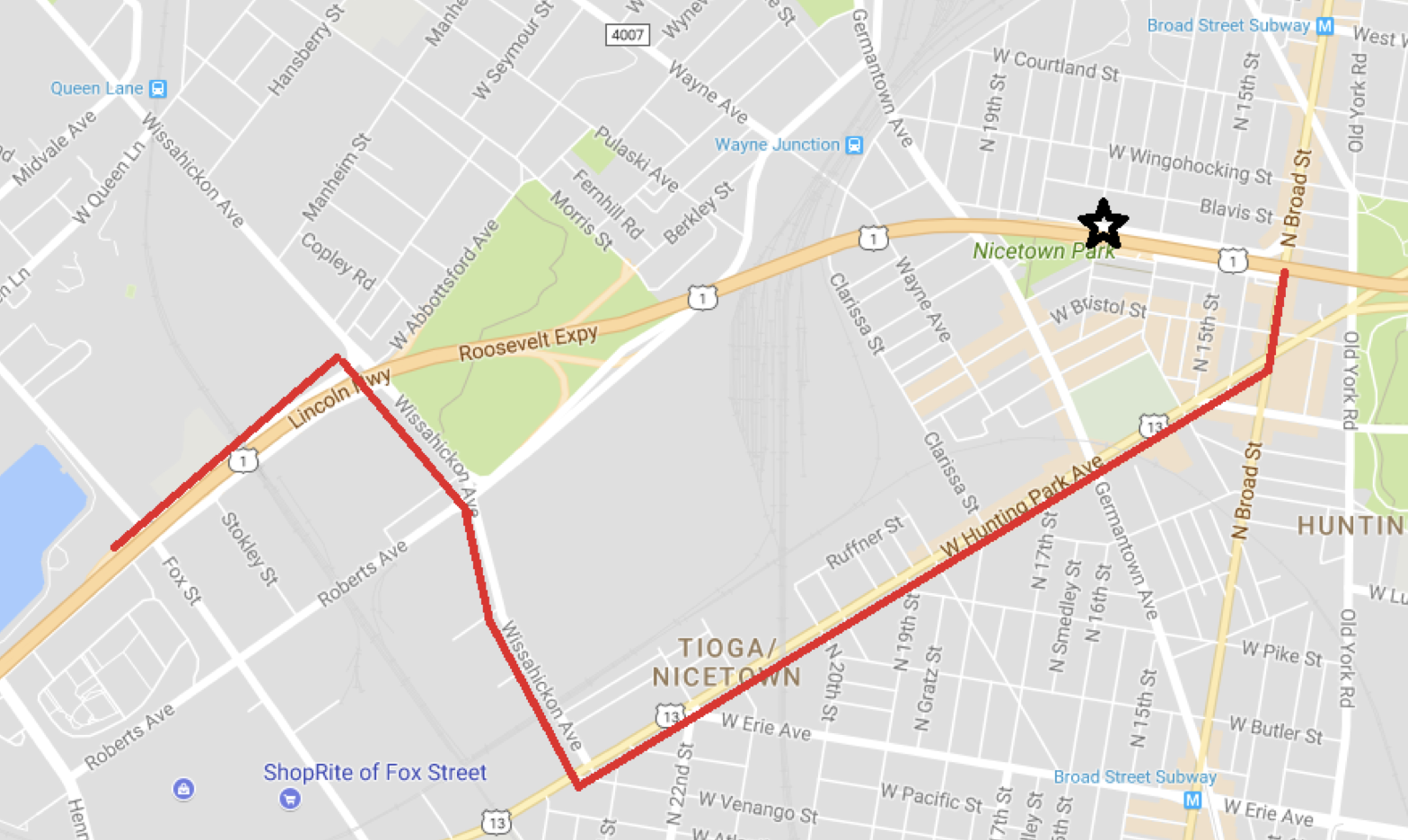
At Street Level
With construction activities limited to the viaduct, those living or working near the viaduct should experience minimal disruption. However, construction of this kind can be noisy at times.
The contractor will park vehicles, construction equipment, and construction materials on the PennDOT right-of-way under the bridge.
Street-level activities — vehicular and pedestrian movements — will be protected by a debris shield that will be installed on the underside of the bridge superstructure. There will be a network of scaffolding under the bridge to provide access for the contractor to the work areas above. Scaffolding also will be constructed around the viaduct’s support piers for use during various substructure repairs.
Repainting
Repainting of the viaduct’s structural components involves the complete removal of the existing paint coatings and any rust and other debris that has accumulated on the steel components. The contractor will remove the existing paint coating early in the construction phase and then apply a primer coat. The finished paint, which will be brick red in color, will then be applied near the end of construction.
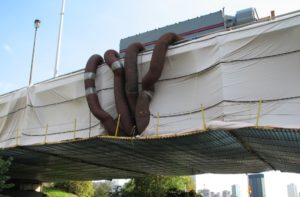 Because the viaduct’s existing paint coatings contain lead, PennDOT is taking measures to ensure that the work will not harm the public, the environment, or construction personnel. Paint removal operations will be performed in a contained area that captures all dust and debris, which is then removed by use of a powerful vacuum system and disposed of.
Because the viaduct’s existing paint coatings contain lead, PennDOT is taking measures to ensure that the work will not harm the public, the environment, or construction personnel. Paint removal operations will be performed in a contained area that captures all dust and debris, which is then removed by use of a powerful vacuum system and disposed of.
All repainting activities, as well as all other project operations, will be independently monitored to ensure that all environmental procedures — especially with respect to air and noise quality — are strictly followed throughout the course of the project.
